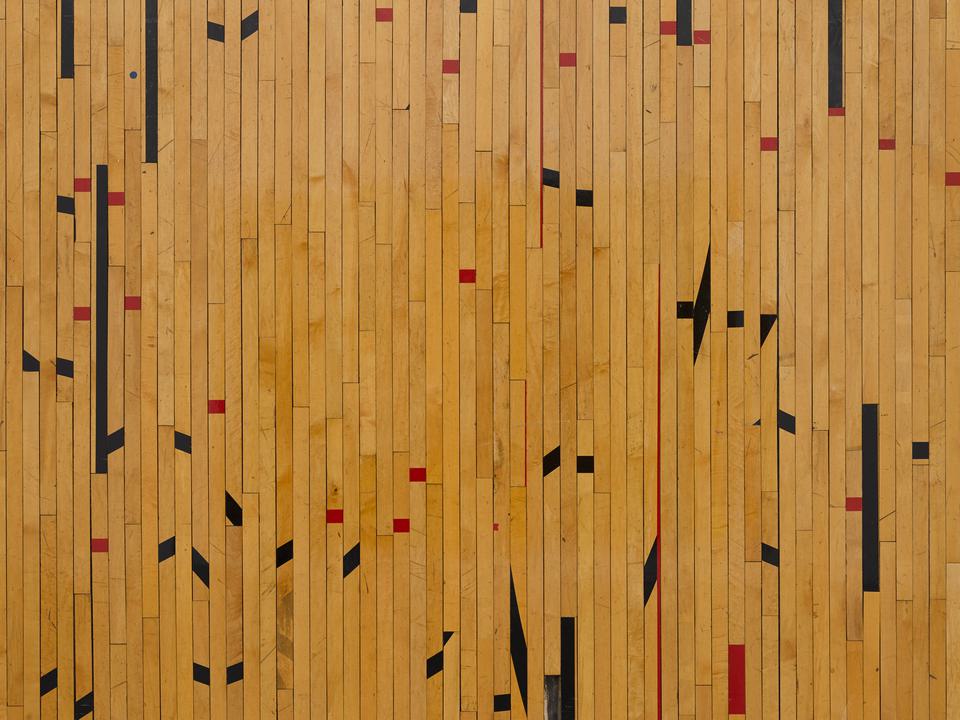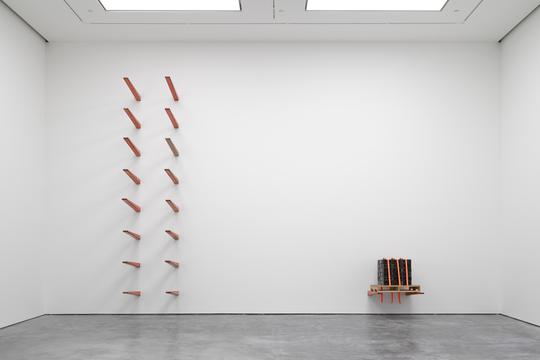
Freedom of Assembly
Theaster Gates
Freedom of Assembly
29 April – 5 July 2015
Dates
29 April – 5 July 2015
White Cube presented an exhibition of new work by Theaster Gates. Gates’ practice is wide-ranging and polysemous, attempting to bridge the gap between art and life and catalyse social and economic change through direct artistic agency. For this exhibition, entitled ‘Freedom of Assembly’, Gates explored the theme of assembly in its widest sense, enmeshing ideas of an autonomous art object with notions of individual freedom and the empowerment of place. In particular, Gates refers to the First Amendment of the United States Constitution, which protects freedom of speech, the right to peaceably assemble, and the free exercise of religion.
‘Freedom of Assembly’ included several new series of sculptures, a large-scale presentation of tar paintings and a body of work that foregrounds, for the first time, Gates’ long-term involvement with clay production. Notions of assembly become evident in works that draw on personal memory, politics, and the history and resonance of material objects within our culture.
These themes are syncopated in works that transform materials culled from disused buildings in the artist’s own neighbourhood in the South Side of Chicago. A series of wooden vitrines combine various elements obtained from a closed-down hardware store – a cornerstone of the community that ceased trading in the face of conglomerate competition – alongside lamps, pots, glass and sculptural objects. These colourful visual assemblages attempt to transmute the presence of a place and site now disbanded, while exuding a sense of loss and reduction. In Ground Rules (2015), Gates invokes the narrative of art through his interrogation of painting, and, in particular, the history of modernist abstraction. These works transform strips of a wooden gym-floor into delicate, minimal compositions. Like his earlier ‘Civil Rights Tapestries’ which repurposed old fire hose into pastel-hued fabric works, these sculptures reignite the significance and poetry of found materials through a process of reassembly and re-composition.
Personal and political themes are explored in a new series of large-scale tar paintings, where rubber and tar is applied to wood panels creating monochrome, textural compositions. In these works, Gates makes his decisions based on the procedure of roofing, not painting, a process the artist describes as: ‘borrowing good roofing strategies, through formal engagement with it, to arrive at painting or at least to get to the essence of roofing’. With their thick impasto and shiny reflective surface, the tar creates a surface that visibly reflects the movement of the hand across the canvas, linking these works to Japanese calligraphy as well as to a history of gestural abstraction. In other works, sections of flat roofing are displayed like shaped two-dimensional canvases, covered with delicate wooden feather-like tiles. Conceived as an index of roofs – rather than as individual paintings – these works suggest a collective presence and relate strongly to Gates’, whose father tarred roofs for a trade.
Gates furthers these ideas in a collection of clay works that include a group of small figures, stacks of ceramic bricks, and pots that combine clay with tar and other materials from the roofing canon. In these poetic sculptures, Gates’ history with clay is married to his history with labour to create an inspired new body of work.
Alongside his presentation at White Cube Bermondsey, Theaster Gates exhibited a new body of work in the Arsenale at the 56th Venice Biennale from 9 May – 22 November 2015.

Theaster Gates
Visit Artist PageCreate an Account
To view available artworks and access prices.











